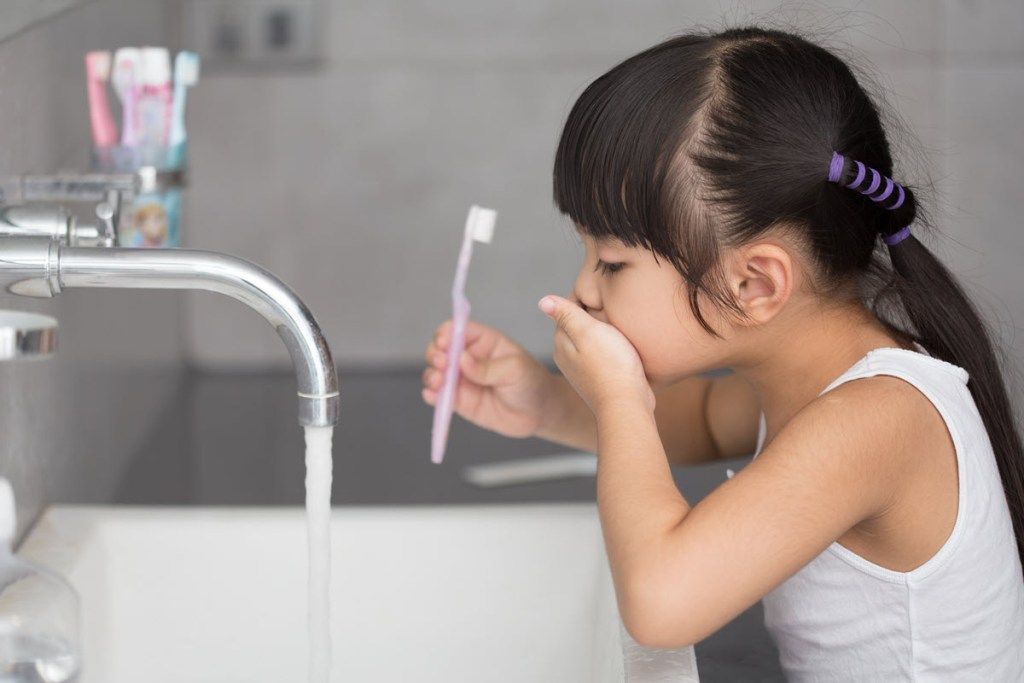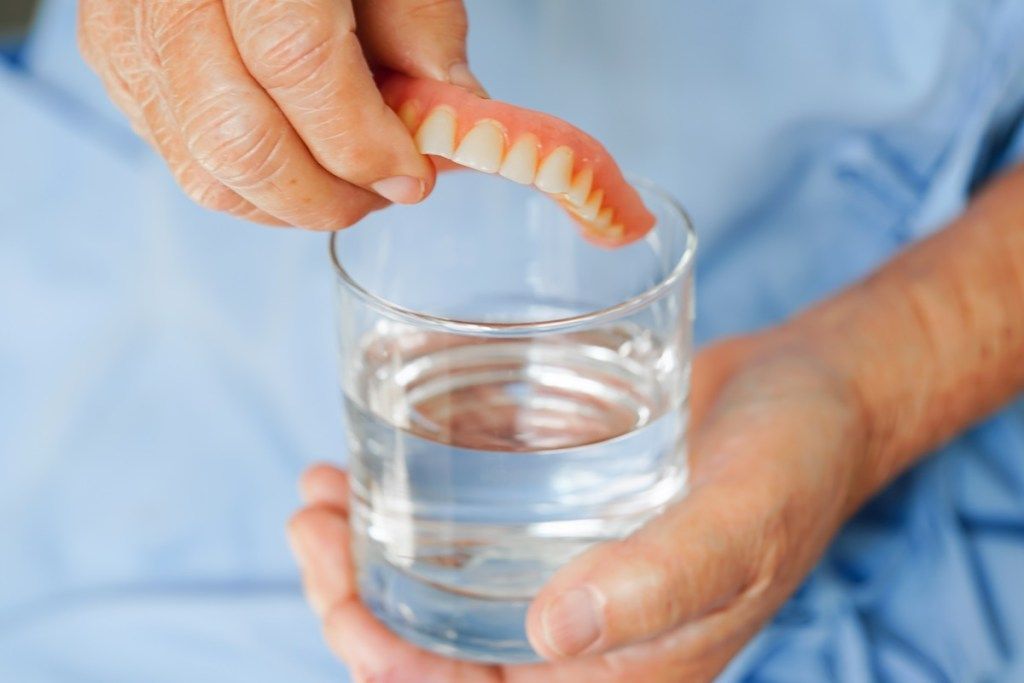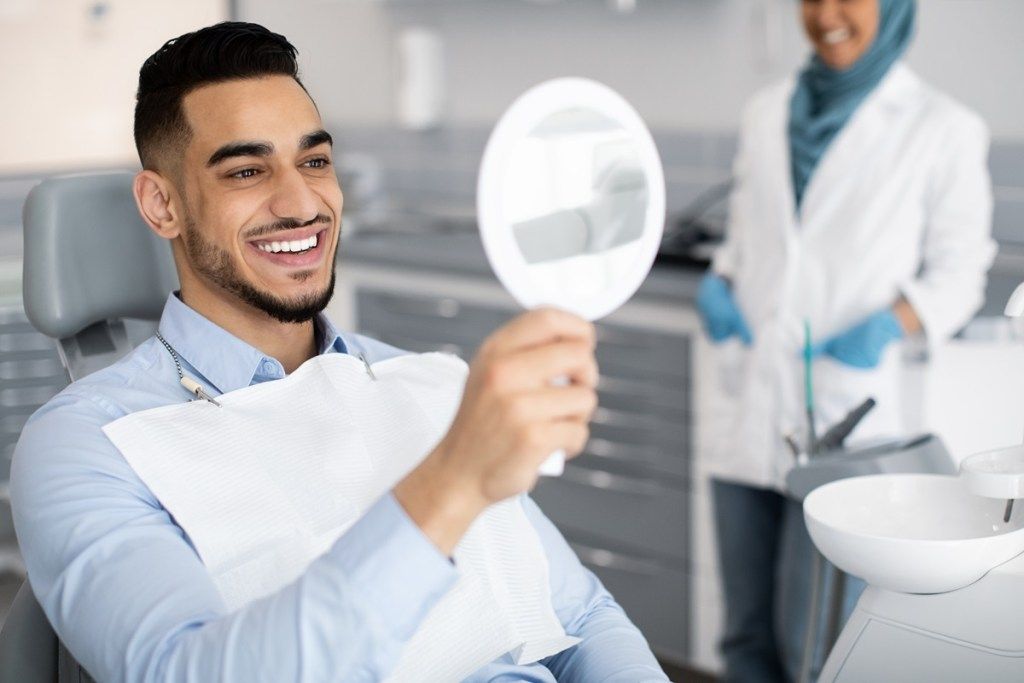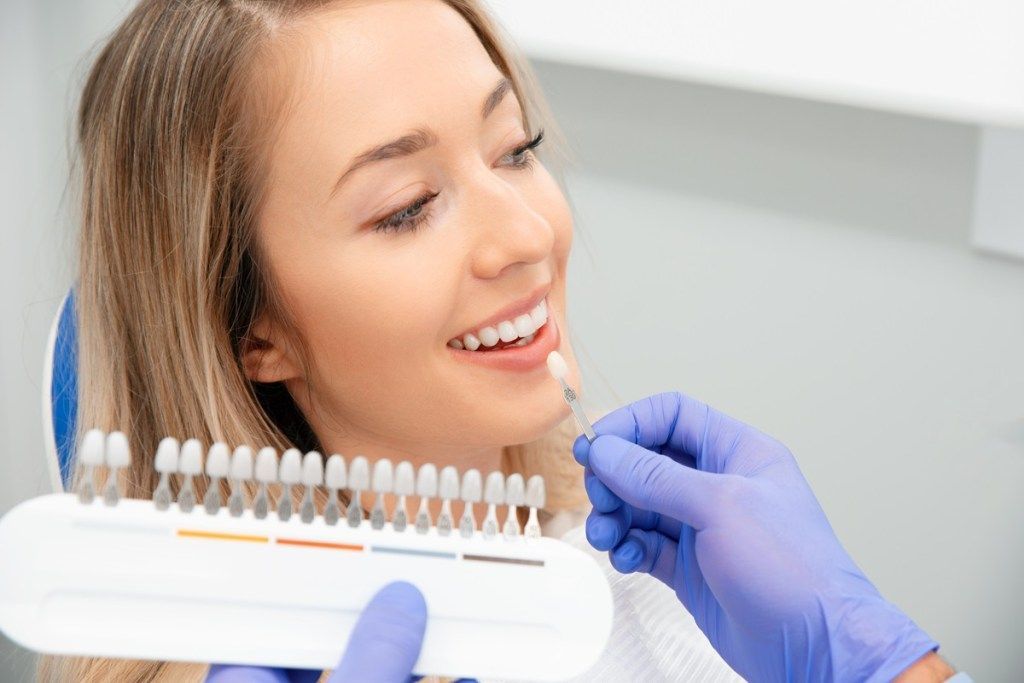Bone Grafts and Sinus Lifts: When Are They Necessary?
360 Dental PC • April 10, 2025

By 360 Dental PC
•
April 10, 2025
Good oral hygiene is a crucial aspect of your child’s overall health and well-being. Teaching kids the importance of caring for their teeth and gums not only helps prevent cavities and gum disease but also instills lifelong habits that contribute to a bright and confident smile. As a parent or guardian, you play a vital role in guiding your child toward healthy dental practices. Here are five tips to help you teach your kids good oral hygiene in a fun and effective way. 1. Start Early and Make It a Routine It’s never too early to start teaching your child about oral hygiene. As soon as your baby’s first tooth appears, you can begin cleaning their gums and teeth with a soft, damp cloth or an infant toothbrush. As they grow older, transition to a toothbrush with soft bristles and a small head, designed for children’s mouths. Establish a routine by brushing your child’s teeth twice a day, once in the morning and once before bedtime. Consistency is key, and making brushing a part of their daily routine will help it become a habit. To make it more engaging, consider playing a favorite song or using a timer to ensure they brush for the recommended two minutes. 2. Lead by Example Children often learn best by observing the behavior of the adults around them. Set a good example by demonstrating your commitment to oral hygiene. Let your child see you brushing and flossing your teeth regularly. You can even brush your teeth together, making it a fun and bonding experience. By showing that you prioritize dental care, you reinforce the importance of these habits. 3. Use Fun and Educational Tools Make brushing and flossing an enjoyable activity for your child by using fun and educational tools. There are many kid-friendly toothbrushes available, featuring popular cartoon characters or vibrant colors. Let your child choose their toothbrush to give them a sense of ownership and excitement about brushing. Additionally, consider using flavored toothpaste that appeals to children. Many brands offer mild, fruity flavors that make brushing more pleasant. Just be sure to choose toothpaste with fluoride, which helps protect against cavities. Educational tools like books, videos, and apps can also be helpful. Many resources are designed to teach children about the importance of oral hygiene in an entertaining and relatable way. These tools can help your child understand the importance of brushing and flossing and motivate them to take care of their teeth. 4. Teach Proper Techniques It’s essential to teach your child the proper techniques for brushing and flossing. Demonstrate how to brush all surfaces of the teeth, including the front, back, and chewing surfaces. Encourage them to use gentle, circular motions and to brush along the gum line. Remind them to brush their tongue as well, as it can harbor bacteria. For flossing, show your child how to use dental floss to clean between their teeth. Emphasize the importance of being gentle and careful not to hurt their gums. If your child finds flossing challenging, you can introduce floss picks or water flossers as alternatives. 5. Make Regular Dental Visits a Positive Experience Regular dental checkups are an essential part of maintaining good oral health. Start taking your child to the dentist by their first birthday or within six months of their first tooth appearing. These visits help identify any potential issues early on and allow your child to become comfortable with the dental team. To make dental visits a positive experience, choose a pediatric dentist who specializes in treating children. These dentists are trained to make children feel at ease and can explain dental procedures in a kid-friendly manner. Praise your child for being brave and cooperative during their dental appointments, and consider offering a small reward afterward as positive reinforcement. Small Steps for Happy Smiles Teaching your child good oral hygiene is a valuable investment in their long-term health and happiness. By starting early, using fun tools, teaching proper techniques, and making dental visits a positive experience, you can help your child develop healthy habits that will last a lifetime. Remember, a bright smile is not just a reflection of good oral hygiene – it’s a reflection of overall well-being. So, brush up on these tips and help your child achieve a healthy and confident smile! The post Five Tips for Teaching Kids Good Oral Hygiene first appeared on Dental Signal .

By 360 Dental PC
•
April 10, 2025
Sleep apnea is a common yet serious sleep disorder that affects millions of people worldwide. While most people are aware of its impact on sleep quality and overall health, few realize the significant effects it can have on oral health. There are significant connections between sleep apnea and your oral health, and key areas of concern. Our team provides insight into how you can protect your smile while managing this condition. Understanding Sleep Apnea Sleep apnea is characterized by repeated interruptions in breathing during sleep. The most common form, obstructive sleep apnea (OSA), occurs when the muscles in the back of your throat relax excessively, causing a temporary blockage of the airway. These interruptions can lead to fragmented sleep and decreased oxygen levels in the blood, which can have a cascade of effects on your health. Dry Mouth and Its Consequences One of the primary ways sleep apnea can impact your oral health is through the development of dry mouth, also known as xerostomia. People with sleep apnea often breathe through their mouths during sleep, especially if they experience nasal congestion. This can reduce the production of saliva, which is crucial for maintaining a healthy mouth. Saliva plays a vital role in neutralizing acids produced by bacteria, washing away food particles, and providing disease-fighting substances throughout the mouth. Without adequate saliva, you may experience an increase in cavities, gum disease, and bad breath. The discomfort associated with dry mouth can also make it difficult to speak, eat, and swallow, further affecting your quality of life. Tooth Grinding and Jaw Pain Another common issue among sleep apnea sufferers is bruxism, or teeth grinding. The condition often occurs unconsciously during sleep and can be exacerbated by the body’s response to interrupted breathing. Grinding your teeth can lead to significant dental problems, including tooth wear, fractures, and even tooth loss. In addition to dental damage, bruxism can cause jaw pain and temporomandibular joint (TMJ) disorders. These issues can manifest as pain or tenderness in your jaw, difficulty chewing, or a clicking sound when opening and closing your mouth. If left untreated, TMJ disorders can lead to chronic pain and may require complex dental or medical interventions. Gum Disease and Inflammation The connection between sleep apnea and gum disease is an area of growing concern. Sleep apnea can contribute to systemic inflammation, which is a known risk factor for periodontal (gum) disease. This inflammation can lead to swollen, bleeding gums, and if left untreated, can progress to more severe forms of gum disease that damage the soft tissue and bone supporting your teeth. Research suggests that people with sleep apnea may be at a higher risk of developing gum disease due to the chronic inflammation associated with the condition. Moreover, the presence of gum disease can exacerbate the symptoms of sleep apnea, creating a harmful cycle that affects both your oral and overall health. How to Protect Your Oral Health Managing the oral health complications associated with sleep apnea requires a multi-faceted approach. First and foremost, it’s essential to seek treatment for sleep apnea itself. This might involve lifestyle changes, such as losing weight or quitting smoking, or the use of continuous positive airway pressure (CPAP) therapy or other medical devices. To combat dry mouth, consider using a humidifier in your bedroom and staying well-hydrated throughout the day. Over-the-counter saliva substitutes or moisturizing mouth sprays can also help alleviate symptoms. For those who grind their teeth, wearing a custom-fitted mouthguard at night can protect your teeth and reduce jaw discomfort. Regular dental checkups are crucial for monitoring your oral health and catching any issues early. Your dentist can provide personalized advice and treatments to address specific concerns, such as treating cavities, managing gum disease, or fitting a mouthguard for bruxism. Addressing Sleep Apnea to Protect Your Smile Sleep apnea’s impact on your oral health is often overlooked but can have serious consequences if left unaddressed. From dry mouth and tooth grinding to gum disease and inflammation, the condition can affect various aspects of your dental well-being. By understanding these risks and taking proactive steps, you can protect your smile and improve your overall quality of life. Don’t hesitate to consult with both your healthcare provider and dentist to create a comprehensive plan for managing sleep apnea and maintaining optimal oral health. The post How Sleep Apnea Impacts Your Oral Health first appeared on Dental Signal .

By 360 Dental PC
•
April 10, 2025
Taking your child to the dentist for the first time is a crucial step in establishing good oral hygiene habits and ensuring their long-term dental health. Understanding what to expect during this initial visit can help ease the anxiety you or your child may have and make the experience positive and educational. Scheduling the First Visit The American Academy of Pediatric Dentistry recommends that children visit the dentist by their first birthday or within six months of their first tooth erupting. Early dental visits help identify potential issues, provide preventive care, and educate parents on proper oral hygiene practices for their children. Preparing Your Child Before the visit, talk to your child about what to expect in simple, positive terms. Explain that the dentist will count and clean their teeth, and that the visit is an opportunity to keep their smile healthy. Reading children’s books about dental visits or watching videos can also help familiarize them with the process and reduce anxiety. The Initial Examination During the first visit, the dentist will perform a gentle examination of your child’s mouth, checking for tooth decay, gum health, and proper development of the teeth and jaw. They may also clean your child’s teeth, remove any plaque or tartar buildup, and apply fluoride if needed to strengthen the enamel. Dental Education A significant part of the first dental visit involves educating parents on how to care for their child’s teeth. The dentist or dental hygienist will demonstrate proper brushing and flossing techniques, discuss the importance of a healthy diet, and address any concerns you may have. They will also provide guidance on preventing common dental issues such as cavities and gum disease. Building a Positive Experience Creating a positive dental experience early on is essential for fostering a lifetime of good oral health habits. Choose a pediatric dentist who has experience working with young children and understands how to make the visit enjoyable. Praise your child for their bravery and cooperation and consider offering a small reward after the visit to reinforce positive behavior. The first dental visit is an opportunity to establish a “dental home” for your child, which is a place where they feel comfortable and receive consistent care. Regular dental check-ups every six months will help the dentist monitor and protect your child’s oral health, catch dental issues early, and provide ongoing education and preventive care. The Path to a Healthy Smile Your child’s first dental visit sets the foundation for a lifetime of healthy smiles. By starting early and maintaining regular dental appointments, you can help your child develop good oral hygiene habits and prevent dental problems. Embrace this important milestone and take pride in setting your child on the path to optimal dental health. The post What to Expect at Your Child’s First Dental Visit first appeared on Dental Signal .

By 360 Dental PC
•
April 10, 2025
Getting braces is a significant step towards achieving a healthier, more attractive smile. However, adjusting to eating and speaking with braces can be challenging initially. Understanding what to expect and how to adapt will help make the transition smoother and ensure the success of your orthodontic treatment. Eating With Braces When you first get braces, your mouth may feel sore and sensitive, making eating uncomfortable. Stick to soft foods like yogurt, mashed potatoes, smoothies, and soups during the first few days. As your mouth adjusts, you can gradually reintroduce more solid foods. Foods to Avoid Certain foods can damage your braces or cause discomfort. Avoid hard, sticky, or chewy foods such as nuts, popcorn, caramel, and chewing gum. These can break brackets, bend wires, and get stuck in your braces, leading to prolonged treatment time and additional dental visits. Foods You Can Enjoy There are plenty of foods you can enjoy without compromising your orthodontic treatment. Soft fruits like bananas and berries, cooked vegetables, pasta, and lean proteins like chicken and fish are excellent choices. Cut your food into small, bite-sized pieces to make eating easier and reduce the risk of damaging your braces. Speaking With Braces Speaking with braces can feel awkward at first, but most people adapt quickly. You may experience slight changes in your speech, such as a lisp, due to the presence of brackets and wires. Practicing speaking slowly and clearly can help you adjust faster. Tips for Better Speech To improve your speech with braces, try reading aloud or practicing difficult words and sounds in front of a mirror. Over time, your mouth will adjust to the new appliances, and your speech will return to normal. If you have trouble with specific sounds, consider working with a speech therapist for additional support. Maintaining Oral Hygiene Keeping your braces clean is crucial for avoiding dental issues like cavities and gum disease. Brush your teeth after every meal using a soft-bristle toothbrush and fluoride toothpaste. Use an interdental brush or floss threader to clean between your teeth and braces. Regular dental check-ups and professional cleanings will help ensure your teeth and gums stay healthy throughout your orthodontic treatment. Special Tools for Cleaning Using specialized tools can make maintaining oral hygiene with braces easier. Interdental brushes are great for cleaning between brackets and wires, while water flossers can effectively remove food particles and plaque from hard-to-reach areas. Orthodontic floss threaders help you navigate floss under the wires, ensuring a thorough clean. Handling Discomfort It’s normal to experience some discomfort after getting braces or having them adjusted. Over-the-counter pain relievers can help alleviate soreness. Applying orthodontic wax to the brackets and wires can prevent them from irritating the inside of your mouth. If the discomfort persists, consult your orthodontist for advice and adjustments. Embracing Your New Smile While adjusting to eating and speaking with braces can be challenging, it’s a temporary phase on the path to a beautiful smile. By following your orthodontist’s guidelines and taking care of your braces, you’ll soon adapt to your new routine. Embrace the journey and look forward to the day your braces come off, revealing a straighter, healthier smile. The post Eating and Speaking With Braces first appeared on Dental Signal .

By 360 Dental PC
•
April 10, 2025
Gum disease, also known as periodontal disease, is a common yet serious condition that can lead to tooth loss if left untreated. Recognizing the stages of gum disease is crucial for early intervention and effective treatment. Understanding the progression of gum disease can help you take proactive steps to maintain your oral health. Gingivitis Gingivitis is the earliest stage of gum disease. It is characterized by inflammation of the gums caused by the buildup of plaque, which is a sticky film of bacteria that forms on teeth. Signs of gingivitis include red, swollen gums that may bleed easily when you brush or floss. At this stage, the damage may be reversible with good oral hygiene and regular dental cleanings. It’s essential to brush twice a day, floss daily, and visit your dentist biannually to keep gingivitis at bay. Early Periodontitis If gingivitis is left untreated, it can progress to early periodontitis. In this stage, the inflammation extends deeper into the tissues and bones supporting the teeth. Plaque hardens into tartar, which can only be removed by a dental professional. Symptoms of early periodontitis include persistent bad breath, receding gums, and slight bone loss around the teeth. Early intervention with professional cleanings and improved oral hygiene can help manage the condition and prevent further damage. Moderate Periodontitis Moderate periodontitis is marked by increased damage to the supporting structures of the teeth. The gums may start to pull away from the teeth, forming pockets that become infected. Symptoms include more noticeable gum recession, increased tooth mobility, and moderate bone loss. Treatment at this stage often involves scaling and root planing—a deep cleaning procedure to remove tartar and bacteria from below the gum line. Regular maintenance and follow-up visits are crucial to managing the disease. Advanced Periodontitis Advanced periodontitis is the most severe stage of gum disease, leading to significant damage to the gums, bones, and connective tissues that support the teeth. Symptoms include severe gum recession, deep pockets, pus between the teeth and gums, loose teeth, and even tooth loss. At this stage, more intensive treatments such as surgical intervention, bone grafts, or tissue regeneration may be necessary to restore oral health. Consistent periodontal care and a commitment to oral hygiene are vital to prevent further progression. Maintaining Gum Health Preventing gum disease is possible. Regular dental check-ups, good oral hygiene practices, and a healthy diet play a significant role in maintaining gum health. Brush your teeth at least twice a day with fluoride toothpaste, floss daily, and use an antimicrobial mouthwash if recommended by your dentist. Avoid tobacco products, as they can exacerbate gum disease and hinder treatment. By recognizing the stages of gum disease and taking proactive steps, you can protect your oral health and preserve your smile for years to come. The post Recognizing the Stages of Gum Disease first appeared on Dental Signal .

By 360 Dental PC
•
April 10, 2025
Wearing dentures for the first time can be a significant adjustment. Whether you’ve recently received full or partial dentures, adapting to this new dental appliance takes time and patience. However, with the right guidance and care, you can ensure a smoother transition into wearing dentures. Here are some valuable tips to help you navigate this new experience: Embracing Your New Smile Congratulations on your decision to improve your dental health by getting dentures! While it may feel daunting at first, remember that wearing dentures is a positive step towards enhancing your bite function and restoring your smile’s aesthetics. With proper care and adjustment, you’ll soon become accustomed to your new dental appliance. Patience is Key Adjusting to dentures takes time, so be patient with yourself during this transition period. Initially, you may experience discomfort, difficulty speaking, or increased saliva production. These issues are normal and tend to improve as your mouth adjusts to the dentures. Practice speaking and eating slowly, gradually increasing your pace as you become more comfortable. Proper Denture Care Maintaining good oral hygiene is crucial for the longevity of your dentures and the health of your remaining teeth and gums. Clean your dentures daily with a soft-bristled brush and denture cleaner to remove food particles, plaque, and bacteria. Additionally, remember to brush your gums, tongue, and palate to prevent bad breath and oral infections. Attend Regular Dental Checkups Even with dentures, it’s essential to maintain regular checkups with your dentist. Your dentist will examine your oral tissues, check the fit of your dentures, and make any necessary adjustments. These appointments are vital for ensuring the continued comfort and functionality of your dentures. Practice Proper Eating Habits In the beginning, stick to soft foods and cut them into smaller pieces to make chewing easier. Avoid sticky or hard foods that can dislodge your dentures or cause discomfort. As you become more accustomed to wearing dentures, gradually reintroduce a variety of foods into your diet, chewing carefully and evenly on both sides of your mouth. Use Adhesive Sparingly Denture adhesive can help improve the stability and retention of your dentures, especially if you have lower dentures. However, it’s essential to use adhesive sparingly and according to your dentist’s recommendations. Using too much adhesive can make it challenging to clean your dentures properly and may cause gum irritation. Stay Hydrated Dry mouth is a common issue for denture wearers, which can lead to discomfort and oral health problems. Stay hydrated by drinking plenty of water throughout the day. Avoid sugary or acidic beverages that can contribute to tooth decay and gum irritation. Smile Confidently with Dentures As a first-time denture wearer, it’s natural to experience some challenges along the way. However, with patience, proper care, and the guidance of your dentist, you can overcome these obstacles and enjoy the benefits of your new smile. Remember to be gentle with yourself during this adjustment period and celebrate each milestone as you become more comfortable with your dentures. Your journey towards better oral health and confidence starts now! The post Tips for First-Time Denture Wearers first appeared on Dental Signal .

By 360 Dental PC
•
April 10, 2025
Enhancing the appearance of a single tooth can have a significant impact on your overall smile. Whether it’s affected by discoloration, damage, or misalignment, various cosmetic dental treatments are available to address specific issues and improve the aesthetics of your tooth. Why Get Cosmetic Treatment for Just One Tooth? Your smile is often one of the first things people notice about you. A single imperfect tooth can detract from an otherwise perfect smile, affecting your confidence and how others perceive you. Fortunately, modern cosmetic dentistry offers a range of treatments to correct and enhance individual teeth. Whether you’re dealing with a chipped, discolored, or misaligned tooth, there’s a solution tailored to meet your needs. Teeth Whitening to Brighten a Discolored Tooth One of the simplest and most common cosmetic treatments for a single discolored tooth is teeth whitening. This treatment involves applying a bleaching agent to the tooth to remove surface stains and restore its natural color. In-office whitening treatments provide quick and noticeable results, often within an hour. For less severe discoloration, at-home whitening kits prescribed by your dentist can be effective. Dental Bonding to Repair Chips and Cracks Dental bonding is an excellent option for repairing minor chips, cracks, or gaps in a single tooth. This procedure involves applying a tooth-colored resin to the damaged area, which is then shaped and polished to match the surrounding teeth. Bonding is a quick, non-invasive treatment that can usually be completed in a single visit. It’s also relatively affordable compared to other cosmetic treatments. However, while bonding can last several years, it may need to be touched up or replaced over time, especially if you have habits like biting your nails or chewing on hard objects. Veneers Boost Your Smile’s Aesthetic For more some cosmetic issues, such as permanent discoloration, slight misalignment, or significant wear, veneers offer a reliable solution. Veneers are thin shells made of porcelain or composite resin that are custom-designed to fit over the front surface of your tooth. The process involves removing a small amount of enamel from the tooth to ensure a proper fit, making it a more invasive procedure than bonding. However, veneers are incredibly durable and can last 10-15 years or longer with proper care, providing a long-term solution for a flawless smile. Crowns to Restore Function and Appearance If a single tooth is severely damaged or decayed, a crown might be the best option. Crowns, also known as caps, cover the entire tooth, restoring its shape, size, and function. They can be made from various materials, including porcelain, ceramic, and metal, but porcelain and ceramic are popular for their natural appearance. The procedure typically requires two visits: one to prepare the tooth and take impressions, and another to fit and cement the crown. Orthodontics to Align a Misaligned Tooth In cases where a single tooth is misaligned, orthodontic treatments such as braces or clear aligners can effectively reposition it. Clear aligners, like Invisalign® clear aligners, are a popular choice for their discreet appearance and convenience. They involve wearing a series of custom-made, clear plastic trays that gradually move the tooth into the desired position. This treatment is usually best for minor misalignments and can take several months to a year to complete. While traditional braces are less commonly used for a single tooth, they may be recommended in cases of more complex alignment issues. Achieving Your Ideal Smile Enhancing a single tooth can dramatically improve your smile and boost your self-esteem. Whether you choose whitening, bonding, veneers, crowns, or orthodontics, consulting with a cosmetic dentist will help you determine the best treatment for your specific needs. Remember, investing in your smile is not just about aesthetics; it’s also about maintaining good oral health and enjoying the confidence that comes with a beautiful smile. The post Cosmetic Treatments to Enhance a Single Tooth first appeared on Dental Signal .

By 360 Dental PC
•
April 10, 2025
When you think about maintaining a healthy smile, brushing and flossing likely come to mind. However, there’s another essential factor that often gets overlooked, which is hydration. Drinking enough water is crucial not only for your overall health but also for your oral health. Staying hydrated can significantly impact the condition of your teeth and gums, and by understanding the connection, you can take steps towards a healthier, brighter smile. How Hydration Affects Oral Health Your mouth, like the rest of your body, depends on water to function properly. Saliva, which is about 99% water, plays a vital role in maintaining oral health. It helps to wash away food particles, neutralize acids produced by bacteria, and provide disease-fighting substances in your mouth. When you don’t drink enough water, saliva production decreases, leading to dry mouth (xerostomia). A dry mouth creates an environment where bacteria can thrive, increasing the risk of cavities, gum disease, and bad breath. By staying hydrated, you ensure that your mouth remains moist, supporting the natural protective mechanisms that keep your teeth and gums healthy. Benefits of Drinking Water for Your Smile Drinking water offers numerous benefits for your oral health. While it’s well known that water is essential for overall bodily functions, its specific advantages for maintaining a healthy smile are worth exploring. Here are some key ways in which staying hydrated can enhance your dental health: Cavity Prevention : Water helps to rinse away food particles and bacteria that can cause tooth decay. Without adequate hydration, these particles remain on your teeth, leading to plaque buildup and eventual cavities. Stronger Teeth : Many public water supplies contain fluoride, a mineral known to strengthen enamel and prevent tooth decay. Drinking fluoridated water regularly can help fortify your teeth, making them more resistant to acid attacks from plaque bacteria and sugars in your mouth. Gum Health : Staying hydrated helps maintain healthy gums by keeping them moist and promoting good circulation. Hydration also helps to reduce the risk of gum disease, which can lead to tooth loss if left untreated. Fresh Breath : Bad breath, or halitosis, is often caused by a dry mouth. Drinking water helps to wash away food debris and bacteria that can cause bad breath, keeping your mouth fresh and clean. Tips for Staying Hydrated Maintaining good hydration habits is easier than you might think. By incorporating a few practical strategies into your daily routine, you can ensure you’re drinking enough water to support your oral health. Here are some tips to help you stay hydrated: Carry a Water Bottle : Having a water bottle with you throughout the day serves as a constant reminder to drink water. Sipping regularly rather than chugging large amounts at once can keep you consistently hydrated. Eat Water-Rich Foods : Incorporate foods with high water content into your diet, such as cucumbers, oranges, strawberries, and watermelon. These not only contribute to your overall hydration but also provide essential nutrients for your teeth and gums. Set Reminders : Use phone alarms or apps designed to remind you to drink water. Regular reminders can help you develop a habit of drinking more frequently. Limit Dehydrating Drinks : Be mindful of beverages that can dehydrate you, such as coffee, alcohol, and sugary sodas. While it’s fine to enjoy these in moderation, balance them with plenty of water to stay hydrated. Track Your Intake : Keeping track of how much water you drink each day can be an effective way to ensure you’re meeting your hydration goals. There are numerous apps available that can help you log your water intake. Hydrate for a Brighter Smile Hydration plays a pivotal role in maintaining a healthy smile. By ensuring you drink enough water, you support the production of saliva, which protects your teeth and gums, helps prevent cavities, and keeps your breath fresh. Simple habits like carrying a water bottle, eating water-rich foods, and setting reminders can make a significant difference in your oral health. Remember, a beautiful smile starts from within, and staying hydrated is one of the easiest ways to keep your teeth and gums in optimal condition. So make water your beverage of choice, and enjoy the benefits of a healthier, brighter smile! The post Hydrating for a Healthier Smile first appeared on Dental Signal .

By 360 Dental PC
•
April 10, 2025
A bright, white smile can boost your confidence and leave a lasting impression. You may have seen numerous products and treatments claiming to give you whiter teeth. In particular, professional teeth whitening treatments offered by dentists are often touted as the gold standard. But do they live up to the hype? In this blog post, we’ll explore how well professional teeth whitening works, what you can expect from the process, and whether it’s worth the investment. The Science Behind Teeth Whitening Teeth whitening involves the use of bleaching agents, typically hydrogen peroxide or carbamide peroxide, to break down stains on the surface of your teeth. These stains can be extrinsic, meaning they occur on the outer layer of the teeth due to consumption of food, drinks, or tobacco. They can also be intrinsic, which are deeper stains that form within the tooth due to factors like aging, trauma, or medication. Teeth whitening lifts layers of stains off the surface of your teeth. When you undergo professional teeth whitening, the dentist applies a concentrated bleaching gel to your teeth. This gel penetrates the enamel and reaches the dentin, breaking down the compounds that cause discoloration. In some cases, a special light or laser may be used to accelerate the bleaching process. The result is a visibly whiter smile. Effectiveness of Professional Teeth Whitening Professional teeth whitening is generally more effective than over-the-counter products. The high concentration of bleaching agents used in a professional setting can significantly lighten the shade of your teeth in just one session. While the degree of whitening varies from person to person, many people experience noticeable improvements, often several shades lighter, after a single treatment. However, it’s important to set realistic expectations. The effectiveness of the treatment can depend on the type and severity of your stains. For example, teeth that are yellow in color respond better to bleaching than teeth that are gray. Safety and Sensitivity Safety is a significant advantage of professional teeth whitening. Because the procedure is performed under the supervision of a dental professional, it minimizes the risk of complications like gum irritation or damage to the enamel. Your dentist will also take steps to protect your gums and other soft tissues during the procedure. However, some people may experience temporary tooth sensitivity after whitening. This occurs because the bleaching agents can temporarily weaken the enamel, making your teeth more sensitive to hot and cold temperatures. Your dentist can recommend desensitizing products or specific aftercare instructions to manage any discomfort. Duration of Results One common question is how long the results of professional teeth whitening last. The answer depends on your lifestyle and oral hygiene habits. Generally, the effects can last from six months to two years. To prolong the results, you’ll need to maintain good oral hygiene, avoid staining foods and beverages, and possibly use touch-up treatments as recommended by your dentist. Cost Considerations Professional teeth whitening is more expensive than at-home treatments, but it offers several benefits that justify the cost. The customized approach ensures better and safer results, and the immediate, noticeable improvement can be well worth the investment. Additionally, considering the long-term savings on less effective over-the-counter products, professional whitening can be a cost-effective solution in the long run. A Potential Path to a Dazzling Smile So, how well does professional teeth whitening actually work? The answer is quite well, especially if you’re looking for a noticeable, immediate improvement in the color of your teeth. The treatment is effective, safe, and can provide long-lasting results when paired with good oral care habits. While it may be more expensive than other options, the benefits of professional supervision and high-quality results make it a worthwhile investment for many people. If you’re considering brightening your smile, professional teeth whitening could be the right choice for you. The post How Well Does Professional Teeth Whitening Actually Work? first appeared on Dental Signal .

